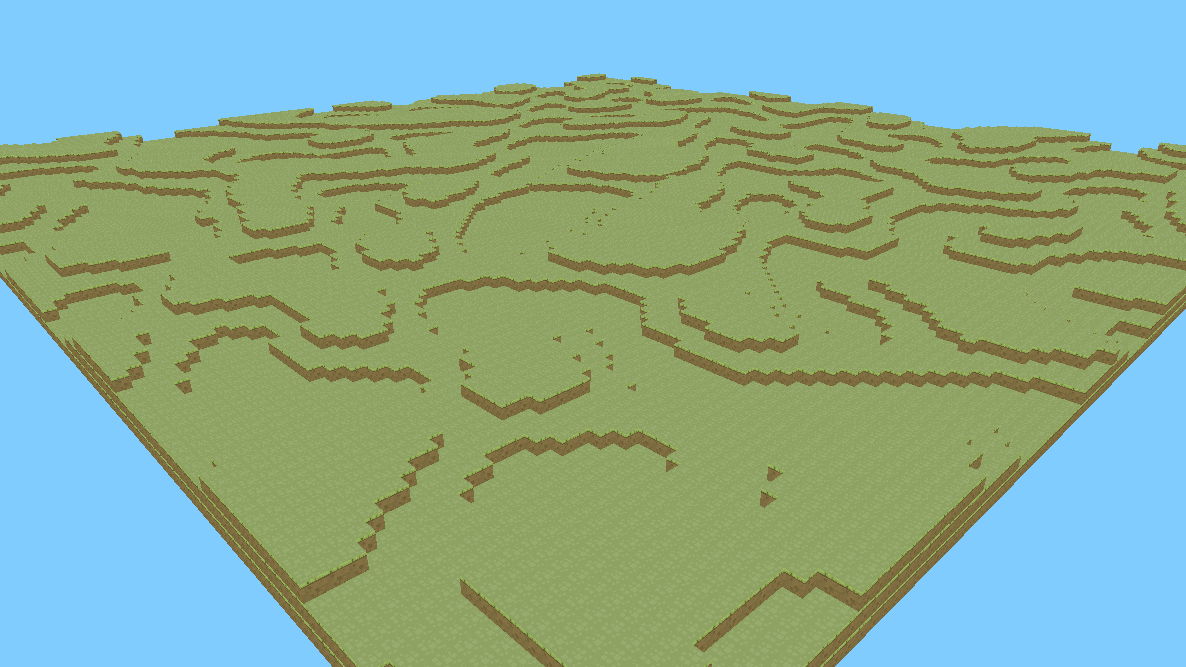What Does the Vox(el) Say?
As always, I've started a new project. I really need to start sticking with my projects and finishing. I'll try my best to do that with this one. I've started working on a cube-oriented game akin to Minecraft and Cube World .
Note that my intent is not to recreate either of these games. I don't have a game idea in mind right yet, but I'm hoping something will rise to the top of my mind soon. Once that happens, I'll switch focus from creating a voxel "engine" and actually create a game with whatever I have at that point. I'll most likely aim for a simple and, more importantly, achievable game idea initially. Hopefully I'll learn from all the mistakes I make from that game to actually prepare myself for the release of something more substantial.
Anything I learn along the way I'll hopefully remember to share with anyone and everyone who actually reads my blog (I'm sorry I neglect it...).
Overview
For my first post, I'll just outline a few things about what I've done so far:
- To keep myself sharp in the ways of the dark side, C++ is the language of choice. I'm also taking advantage of a lot of C++11 features. Once I get around to upgrading my local Clang/LLVM, possibly some of the C++14 features too.
- My personal laptop maxes out at OpenGL 3.3, so that's my starting point.
- GLFW is used for windowing and input.
- FreeImage is used to load textures from disk. I may switch this guy out eventually, but it gets the job done for now.
- I'm using Smoothic for placeholder textures. It's a Minecraft theme, so things may look a little Minecraft-y while I'm developing.
- Boost.Filesystem for a few filesystem operations I'm doing.
As for the "engine" that produced the screenshots above, it's pretty basic. Some of its features include:
- Basic first-person movement. WADS to walk around, space to jump, mouse to look around, et cetera. All of this will be configurable and easy to swap in and out eventually.
- The most horribly written intersection test that doesn't really work, but gets the job done for now.
- Texture atlases, basic shaders, and the fanciest of fancy OpenGL-ness.
And finally, some things I'll be working on in the near future:
- Better abstraction of input. Basically I want to tie input events (e.g., key press, mouse click, mouse move) to action objects. In terms of design patterns: Command .
- Implement picking code. Picking refers to figuring out what 3D object corresponds to a pixel. There are several ways to do this. In a voxel world you can get away with a ray tracing algorithm. Another approach is to take advantage of the GPUs power by rendering all your geometry with unique colors. If you offload this into a framebuffer object, you can extract the color for a pixel and decode it to figure out what geometry corresponds to that pixel.
- Add a user interface. At the very least, get some foundational stuff done for 2D rendering (fonts, text, dialogs, etc). I can't really create an actual UI until I figure out what kind of game I'll be implementing!
- Load things from config files. I'm thinking I'll use JSON if there's a decent C++ library out there for it (most likely will be). These configs will hold information on things such as voxel descriptors (e.g., what textures get applied to each side of the cube) and texture atlas info.
- Better abstractions for shader programs. In particular, connecting VAO attributes to the shader inputs.
- Perhaps the more difficult thing to implement, but better sooner than later, is a server/client architecture.
There's much more to do, but those things are what I have on my TODO list right now. I'll try to post small updates whenever I implement any of them, and maybe even post other dev-related things in between. If you're interested in hearing about something more specific then Tweet to @thegedge



